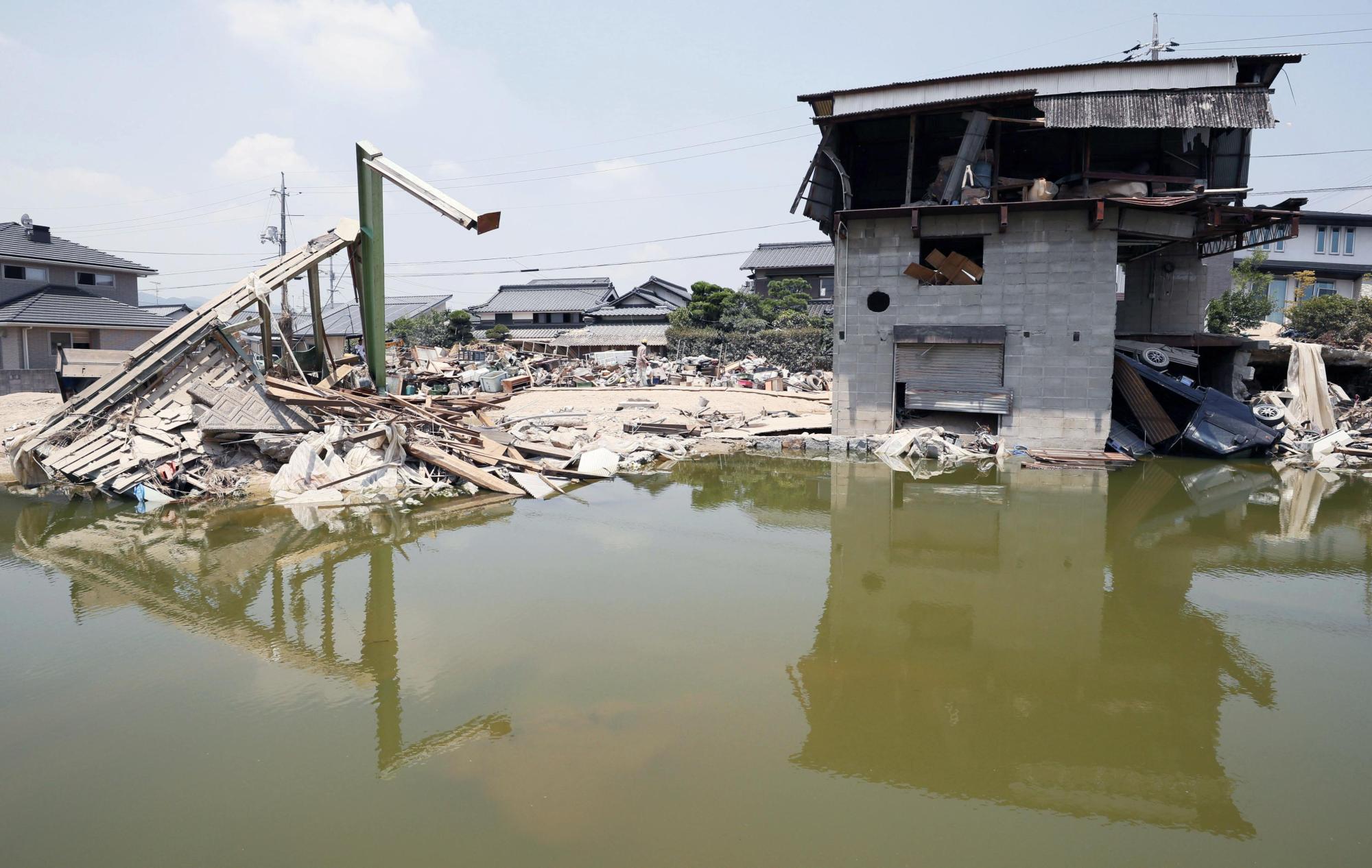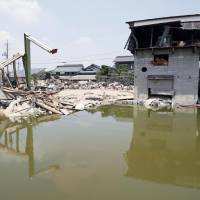Seventy percent of the people killed by the torrential rain in western Japan this month were 60 or older, tallies show.
Of 169 fatalities identified as of Sunday evening, 118 were 60 or older and six were under 10.
The downpours began on July 5, triggering massive flooding and hundreds of landslides that created Japan's worst weather disaster in decades.
The group of 118 included 11 in their 90s, 33 in their 80s, 43 in their 70s and 31 in their 60s. Some had lived alone and found it difficult to get to their roofs to avoid drowning. Others may have not have been able to get emergency information swiftly.
The National Police Agency says the death toll stands at 217, but the tallies, compiled by Kyodo News, show that more than 20 people remain missing.
About 5,200 people were still living in evacuation shelters in 16 prefectures as of noon Sunday, the Fire and Disaster Management Agency said.
Prime Minister Shinzo Abe said Sunday that special fiscal aid would be provided to regions ravaged by the disaster.
While rescuers continue to search for the missing in Hiroshima, Okayama, Ehime, Osaka and Nara prefectures, Abe said rebuilding work would be eligible for special government subsidies under the Law Concerning Special Fiscal Aid for Coping with Disasters.
"We will help everyone get back to a normal life as we encourage (municipalities) to speed up their disaster recovery without fiscal concerns," Abe said at a meeting at the disaster response headquarters.
The special aid will cover infrastructure and support for businesses and farmers, among other recovery efforts.
Similar aid was provided for recovery work after the earthquakes in Kumamoto Prefecture in 2016 and the disastrous floods in southwestern Japan in 2017.




